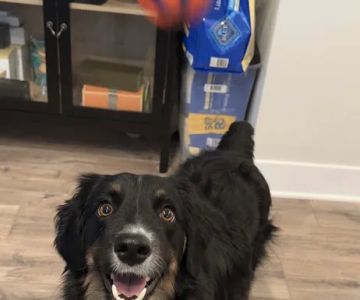- trust-building-with-rescue-dogs-in-2025 - Building trust with your rescue dog from the first day
- understanding-your-rescue-dogs-past-behavior - Understanding your rescue dog’s past to shape better behavior
- training-strategies-for-early-days - Effective training strategies for the first 30 days
- socialization-and-positive-environments - Socialization and setting up positive environments
- case-study-max-the-anxious-shepherd - Case study: Max, the anxious German Shepherd
- expert-advice-and-recommended-support - Professional advice and recommended support from Hidden Brook Veterinary
1. Building Trust with Your Rescue Dog from the First Day
In 2025, more American families are choosing to adopt rescue dogs than ever before. While this decision is filled with compassion and hope, the journey begins with one critical mission: building trust. A rescue dog’s first few days in a new home can shape their entire future. These dogs often carry emotional baggage, and your patience, consistency, and understanding are essential tools in creating a strong bond.
Creating a calm and predictable environment is the first step. Avoid overwhelming them with guests or loud noises. Speak gently, move slowly, and offer them their own space—like a comfy crate or quiet room—where they can observe safely. Offering treats, not as bribes but as gestures of goodwill, can start forming positive associations with your presence. Remember, the goal is not control; it’s connection.
2. Understanding Your Rescue Dog’s Past to Shape Better Behavior
Every rescue dog has a backstory, and while you might not know the details, their behavior tells you everything. Whether it’s cowering in fear when a door slams or lunging at unfamiliar people, these responses are rooted in survival, not defiance.
Understanding this helps you respond with empathy rather than frustration. For example, if your dog shows signs of resource guarding, it may be because they never had consistent access to food or toys. In such cases, training should be slow, reward-based, and focused on reducing anxiety rather than enforcing rules. A behavior that looks “bad” is often a reflection of past trauma.
At Hidden Brook Veterinary, we often help pet owners decode these signs and guide them in implementing structured yet compassionate behavior plans tailored to the dog’s history and needs.
3. Effective Training Strategies for the First 30 Days
The first month sets the foundation for everything that follows. Training your rescue dog early—but gently—establishes healthy routines and boundaries. Start with basic commands like “sit,” “stay,” and “come,” using positive reinforcement. Food motivation works well, but affection and play are equally powerful.
Use short training sessions—about 5 to 10 minutes—multiple times per day. Dogs from rescue backgrounds may struggle with long concentration spans, especially if they're still adjusting to their new environment. Avoid punishment-based training. Instead, focus on reward-driven systems that build their confidence.
Consistency is key: stick to a regular feeding schedule, walk routine, and bedtime. Predictability makes dogs feel secure. Using the same verbal cues and hand gestures each time helps reduce confusion and builds faster understanding.
4. Socialization and Setting Up Positive Environments
Proper socialization is not just about meeting other dogs; it's about helping your rescue dog feel safe in a variety of environments. This might mean introducing them slowly to household sounds, different surfaces like hardwood and grass, car rides, or even walking calmly through a pet store.
Don’t rush social experiences. Instead, create short, successful moments. For instance, if your dog meets a calm neighbor and wags its tail, end the interaction on that high note. Gradually increase the complexity and duration as your dog grows more confident.
Interactive toys, puzzle feeders, and low-stress games not only keep your dog engaged but also reinforce that their new life is full of enriching, safe experiences. Our team at Hidden Brook Veterinary often recommends environment-specific enrichment tools to support behavioral development tailored to your dog’s needs.
5. Case Study: Max, the Anxious German Shepherd
Max was a 4-year-old German Shepherd rescued from an overcrowded shelter in Arizona. When his new family brought him home, he refused to leave his crate for two days. Loud noises sent him into a panic, and he wouldn’t eat if anyone was in the room.
With guidance from a professional trainer and support from Hidden Brook Veterinary, Max’s family implemented a slow socialization plan. They used a “look and treat” approach for exposure to new stimuli and rewarded calm behavior with praise and food. After three weeks, Max started eating in the presence of people. By month two, he was enjoying long walks, greeting guests, and even playing fetch in the yard.
Max’s transformation wasn’t magic—it was patience, compassion, and well-structured training that acknowledged his past while building a safer, happier present.
6. Professional Advice and Recommended Support from Hidden Brook Veterinary
Training your rescue dog in 2025 is not a solo journey. The emotional and behavioral complexities of rescued animals often require expert insight. Partnering with professionals—such as trainers, behaviorists, and veterinarians—is not just helpful, it’s often necessary.
At Hidden Brook Veterinary, we offer tailored behavioral consultations, recommend the most effective enrichment tools, and provide health assessments that consider your dog’s unique background. From nutritional advice to anxiety management, our goal is to make the rescue journey smoother for both you and your new companion.
Trust and behavior are deeply connected. With the right approach, what starts as fear and uncertainty can evolve into loyalty, joy, and a lifelong bond. Whether you're just starting or facing unexpected hurdles, remember—rescue is not just saving a dog; it's learning to understand and love them deeply, from day one.












